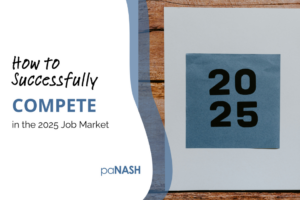|
|
While ageism is illegal in hiring processes, it unfortunately still happens to those over 40. Also unfortunately, there’s not a lot a job seeker can do to fight it.
My clients who’ve previously experienced age discrimination often say,
“If I could just get in the door for an interview I could really market my experience and show them I’m the right person for the job. I could show them how I’m an asset for their company instead of a liability.”
But much of the discrimination comes prior to the interview, usually at the first glance of the candidate’s resume or LinkedIn profile. This is when it’s hardest to prove or fight.
The timing of the discrimination makes it darn near impossible to advance to the interview where the candidate can really show his or her competitive advantages.
So, what can a 40+ candidate do (or not do) on his or her resume and LinkedIn profile to increase the chances of landing an interview?
Several things!
What to Avoid Doing on Your Resume
There are several mistakes older job seekers make on their resumes that quickly give away their age. These are mistakes you can easily avoid and therefore increase your chances of landing an interview.
1. Avoid using outdated contact methods.
If you still have an email address ending in aol.com or hotmail.com, this just screams over 40 (more like over 50)! Instead, create a Gmail account you can use just for your job search correspondence.
Also, don’t list both a landline and a cell phone in your contact info. Only include your cell phone.
You probably also don’t need to include your mailing address since most companies no longer send snail mail. Just your city and state is fine.
2. Avoid specifying exactly how many years of experience you have.
Announcing immediately in the profile summary exactly how many years of experience you have is not always a selling point. The only time it is a selling point is if you have the same amount of years of experience as the job ad requires.
But, if for example you have 20 years of experience for a job only requiring 15 years, you probably want to re-word your summary from “20 years of experience” to either “15+ years of experience” or “extensive experience.”
3. Avoid listing jobs from more than 10 years ago.
Many candidates want to show every job they’ve ever had, but employers really only need to see the last ten years of your experience.
If basing it on requirements like the one in the example above, adjust accordingly.
4. Avoid the outdated typing rule of two spaces between sentences.
If you’re over 40, you probably took typing in high school on a type writer. And you were probably taught to put two spaces between each sentence.
Well, this rule no longer applies since people no longer use typewriters (Google it if you think I’m wrong).
So break the habit now before you give away your age! Trust me, it’s not as hard of a habit to break as I thought it would be.
5. Avoid listing outdated (or obvious) technical skills.
That software program you learned at your old job which is no longer used anywhere else – leave it off!
Also, unless the job ad specifically states Microsoft Office as a must-have skill, don’t list it. At least not the programs EVERYONE uses, like Word or Outlook. Almost everyone has (and should have) these skills so they’re kind of “a given.”
And if you do feel like you need to include Microsoft Office, indicate your level of proficiency for applicable programs if you can honestly say you have “intermediate” or “advanced” proficiency.
Or name some of the advanced features you know how to use that will be useful in the potential job.
This will make you stand out from those who only list the program names.
Next, go and start learning some of the software and platforms required for the job you’re not already familiar with.
Many programs and platforms have free demos or online tutorials you can do right from your own computer. Start there and then play with them! Then, you can at least say you have “working knowledge” of those programs.
An example would be Slack, a platform many companies are now using as a team collaboration tool.
I have a Slack channel set up for me to communicate with my clients and for them to communicate with each other (both openly and privately) in one place.
By making this available for my clients, it gives those new to Slack the opportunity learn it and add it to their skillset.
6. Avoid listing your graduation dates.
You can take your graduation dates off your education if you’ve been out of school for at least 5 years.
There’s no need to have them on your resume. (And you definitely don’t want the hiring managers doing the math in their heads from your grad date since you’re trying to protect yourself from ageism.)
Just list all the other information about your education, and use the most up-to-date name of your institution. (For example, if your alma mater’s name changed from “_____ College” to “_____ University” after you graduated, change it on your resume.)
7. Avoid including your photo.
This advice isn’t just true for older candidates. It’s true for most candidates of all ages. While it’s okay and even encouraged to have a photo on your LinkedIn profile, it’s still not widely accepted on the resume.
This is true even though there are several online resume templates with a designated space for the candidate’s photo.
But, you can appear younger to employers by using one of these more modern looking templates (check out Canva) and just deleting the placeholder for your photo.
The templates found on Canva are good if the job is in an especially creative field where graphic resume designs are more appropriate. I would advise you not use these templates if you’re seeking employment in a more traditional or conservative industry.
How to Protect Yourself from Ageism, Part 2
But what about LinkedIn? Should you include a photo there? And how far back should you go on your experience in your profile?
Stay tuned for next week’s Part 2 post!
In the meantime, get more resume writing tips and advice when you purchase my on-demand course Resumes That Get You the Interview: Surprising Secrets to Getting Your Resume Noticed.






